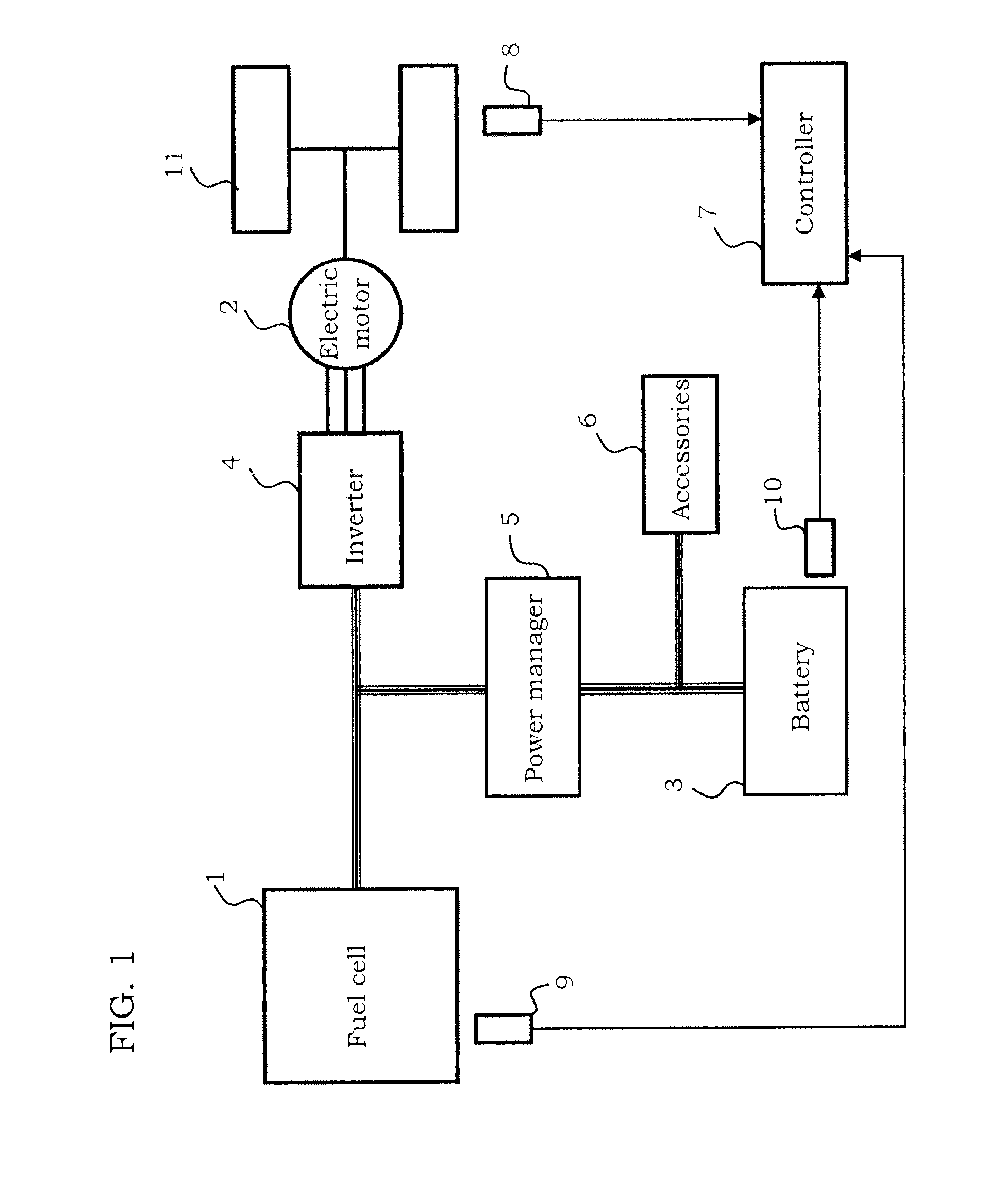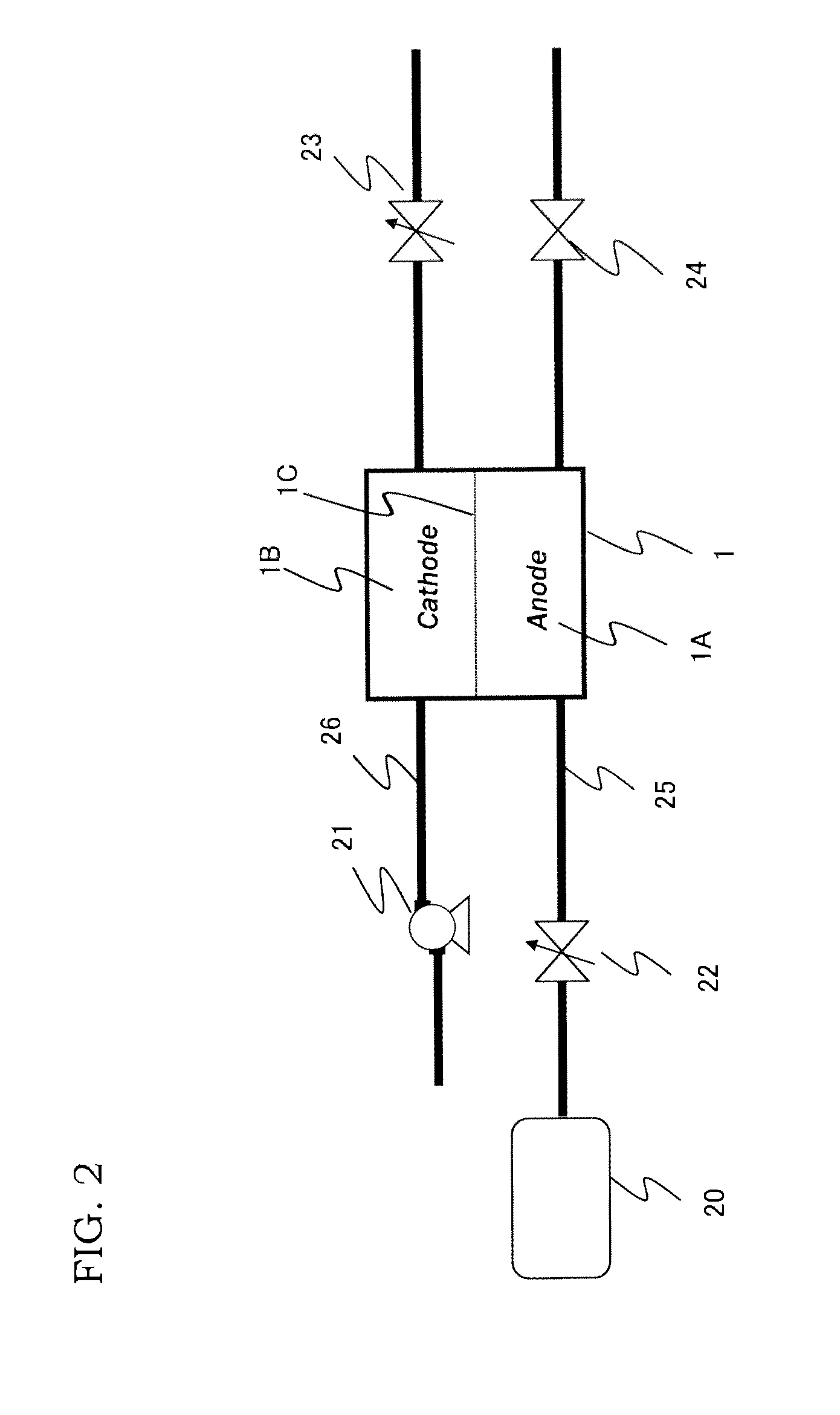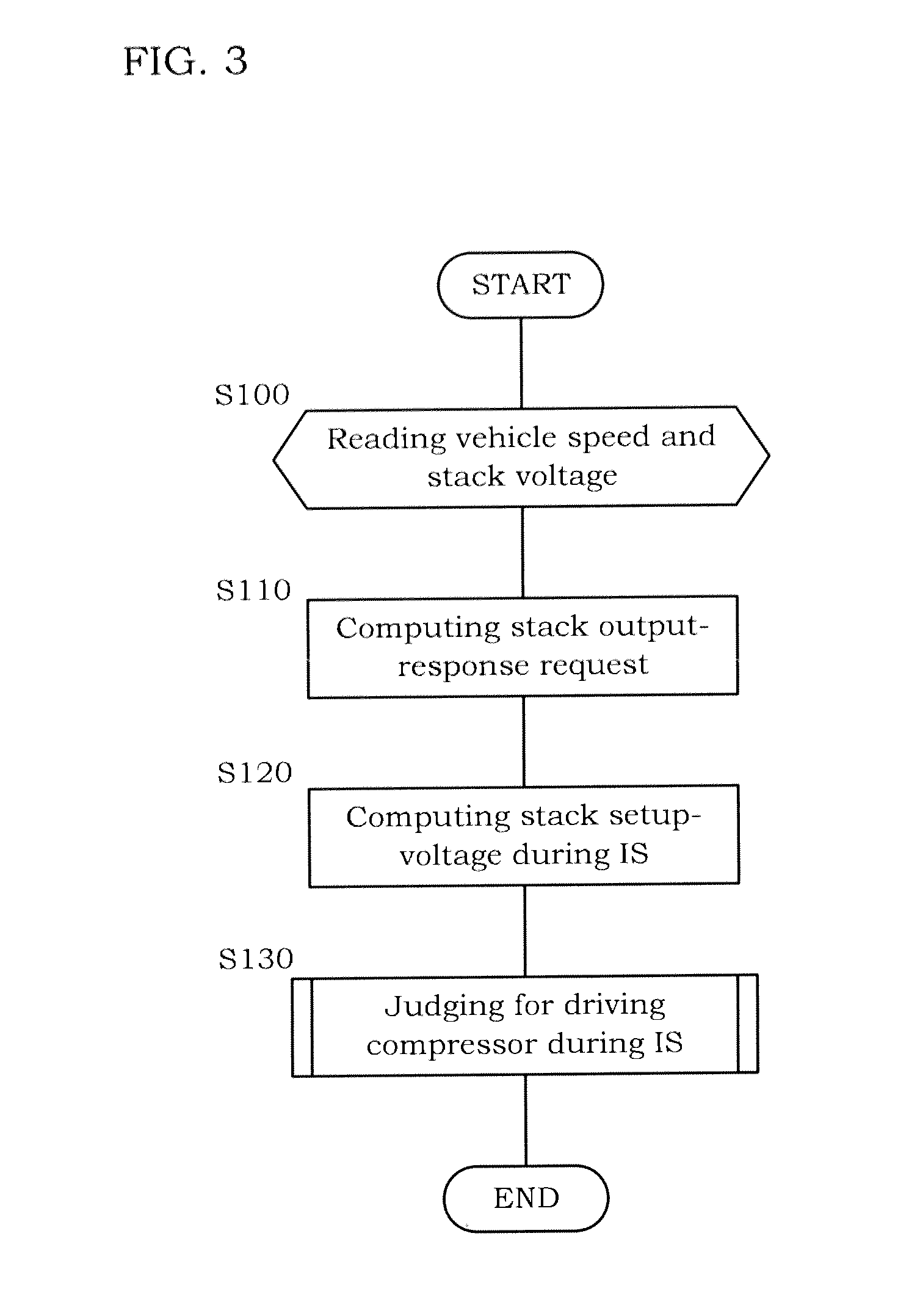Fuel cell system
a fuel cell and system technology, applied in the direction of battery/fuel cell control arrangement, electrochemical generators, battery/cell propulsion, etc., can solve the problems that the over-discharge of batteries or the lowering of drivability cannot be avoided in some cases, and achieve the effect of lowering drivability
- Summary
- Abstract
- Description
- Claims
- Application Information
AI Technical Summary
Benefits of technology
Problems solved by technology
Method used
Image
Examples
first embodiment
[0032]FIG. 1 is a block diagram illustrating an electric power supply system for vehicles, to which a first embodiment is applied. FIG. 2 is a diagram illustrating an example of a fuel cell system.
[0033]An electric power supply system comprises: a fuel cell stack 1; an electric motor 2 as a load; a battery 3; accessories 6; and a power manager 5 that controls a voltage among the fuel cell stack 1, the electric motor 2, the battery 3, and the accessories 6.
[0034]The fuel cell stack 1 is a direct-current power source, as is shown in FIG. 2, having a structure of piling-up a plurality of unit cells in which a electrolyte membrane 1C is sandwiched between an anode 1A and a cathode 1B. Note that, in FIG. 2, only a unit cell is shown.
[0035]To the anode 1A, through a hydrogen supply passage 25, hydrogen gas that serves as a fuel is supplied. To the cathode 1B, through an air supply passage 26, the air that serves as an oxidant gas is supplied.
[0036]In the hydrogen supply passage 25, a pres...
second embodiment
[0074]The system construction of a second embodiment is basically similar to that of the first embodiment. However, a difference resides in the aspect how the controller 7 reads, as the state quantities of the battery 3, battery temperature and battery deterioration coefficient in addition to the charged electricity of the battery. The battery temperature is detected by a battery temperature sensor. The battery deterioration coefficient is computed by the controller 7. The battery deterioration coefficient is based on a battery property deterioration as the repeating number of charging increases; and this coefficient becomes larger as the deterioration advances. The battery deterioration coefficient is computed, for example, as following: the repeating number of charging is counted; and a preliminarily prepared map that provides a relation between the repeating number of charging and the level of deterioration is retrieved with the said counted number of charging. Of course, the oth...
third embodiment
[0094]The system construction of a third embodiment is basically similar to that of the first embodiment. However, a difference from the first embodiment resides in the computation contents of the stack output-response request computed by the controller 7. In this embodiment, the stack output-response request is computed in accordance with a constant of the power-plant that includes therein the fuel cell stack 1, the power manager 5 and the compressor 21. Note that, the controller 7 computes higher, similarly to the first embodiment and the second embodiment, the lower limit of the stack setup-voltage during idle-stop as the stack output-response request is higher. In addition, the constant at the time of the power-plant response is called as a power-plant output-response performance in the following explanation.
[0095]As the power-plant output-response performance lowers, a time, which is required until the output of the electric motor 2 attains a target output that is determined by...
PUM
| Property | Measurement | Unit |
|---|---|---|
| electric power | aaaaa | aaaaa |
| stack voltage | aaaaa | aaaaa |
| voltage | aaaaa | aaaaa |
Abstract
Description
Claims
Application Information
 Login to View More
Login to View More - R&D
- Intellectual Property
- Life Sciences
- Materials
- Tech Scout
- Unparalleled Data Quality
- Higher Quality Content
- 60% Fewer Hallucinations
Browse by: Latest US Patents, China's latest patents, Technical Efficacy Thesaurus, Application Domain, Technology Topic, Popular Technical Reports.
© 2025 PatSnap. All rights reserved.Legal|Privacy policy|Modern Slavery Act Transparency Statement|Sitemap|About US| Contact US: help@patsnap.com



